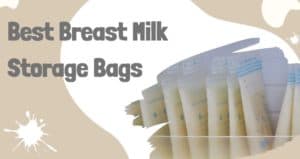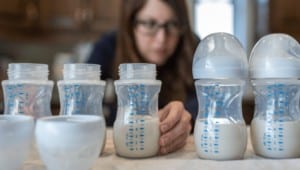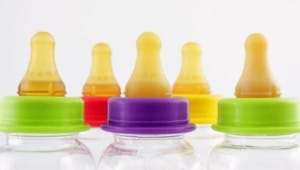Everything you need to know about breast milk storage bags!!
-
Author: Khushboo Kirale
- >> Post Created: May 28, 2021
- >> Last Updated: April 28, 2024
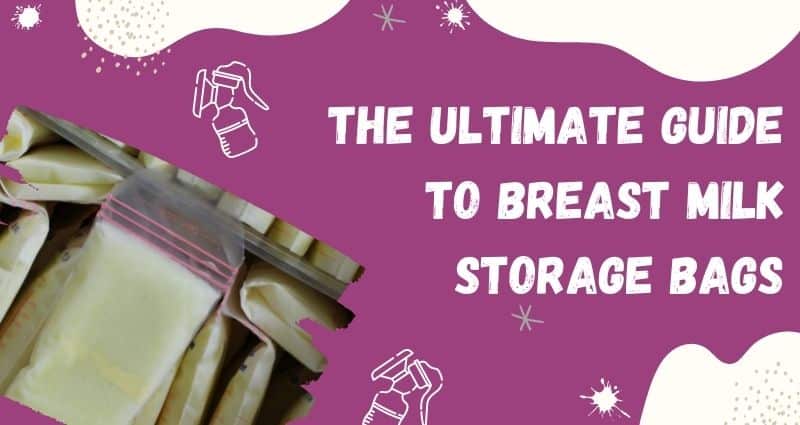
Milk Storage bags - Table of Contents
Your bundle of joy has arrived home, and along with your baby, you have also welcomed a whole bunch of baby products that you may have never even heard of. But slowly and steadily you start getting used to everything, and in no time you will be advising other moms about these products.
One such product is the breast milk storage bags. Just by the name it can be understood that these are bags to store breast milk. Sounds straightforward enough. Well, not quite!!
There are many things that you need to know about breast milk storage bags like how to use them, their storage guidelines, what features to look for while buying them, how to warm the breastmilk stored in these bags etc. Knowing these things can prepare you, and you can avoid a lot of frustration in the future. This article will answer every query and doubt you may have about breast milk storage bags.
To understand what are the various breastmilk storage bag brands and which are some of the best ones, you can also refer to our article on ‘12 Best breast milk storage bags‘. I am sure it will help you.
What are breast milk storage bags??
We all know that cooking food at home is a healthier and a more cost-effective option. But all of us don’t have time to wake up early and pack lunches or come home late from a hard day at work and still have the energy to cook. So we end ordering food more often than we would like.
A great solution to this problem is pre-packing our lunches and dinners when we get the time and storing them in the freezer in bags or containers. When it is time to eat, all we have to do is heat our pre-pack lunches and dinners and we are good to go.
Something similar can be done with breast milk as well. You can breastfeed your baby whenever you get the chance, but when you have to get back to work, go out, run errands, or you are just plain exhausted, it becomes difficult to breastfeed.
The solution is to pump out breast milk when you can and store it in the fridge or freezer for future use when you may be working or not around.
But you can’t just store breast milk in food containers and bags that we store our food in, you need breast milk storage bags for this purpose. These bags are specifically designed for breast milk—to keep it safe and preserve its nutrients. They are meant for one-time use and their sole purpose is storing breast milk.
These bags are thicker and BPA-free, making them safe for your baby. They also have to be FDA-approved for storing, thawing, and freezing breast milk. Not all bags can be used for breast milk storage, bags that are designed for breast milk storage will be labelled accordingly and are pre-sterilized to eliminate all contaminants and germs.
They will also save you space in the freezer, making organizing easier. There are many breast milk storage bags available in the market, each one with their own distinguishing features.
How to choose the best breast milk storage bags??
When you are shopping for the best breast milk storage bag for keeping your liquid gold safe, you can look for the following features to ensure you get the best in your budget:
- Material: The material of the breast milk storage nags needs to be thick and sturdy. The plastic needs to be food-grade plastic that is BPA- and BPS-free. Many brands are also lead, phthalate, PVC, etc. free. As all these breast milk storage bags are for a single-time use only, it is better to buy bags that are recyclable.
- Safety seal: Having a safety seal or a tamper seal on the bag ensures that the bags are clean and sterile. You will have to remove this seal prior to use.
- Durability: After you have spent time and energy in pumping the milk out, you want to make sure that each drop is used in feeding your baby. But some bags can leak and spill the breast milk, which can make you cry (more like ugly cry). So bags that don’t tear, don’t get holes in them, are sealed properly from all sides, and have a leak-proof closure can reduce the chances of leaks and spills (and also your tears).
- Storage: If your fridge and freezer are anything like mine there is hardly any space in it. You have to play a game of Tetris with the things in your fridge to even get an extra inch of space. So bags that lay flat and are stackable can help in saving space and also make it easier for fridge/freezer organization.
- Capacity: Breast milk storage bags come in a range of sizes. They can store as little as 3 or 4 ounces in the smaller bags to 8 to 10 ounces in the larger bags. If you are feeding a newborn then buying bags that can store about 4 ounces is better, as newborn babies don’t drink a lot of milk and if the entire bag is not used in one feed you will only have two hours to finish the rest of the bag or you will have to throw the milk away. On the other hand, if your baby is older, you can go for larger capacity bags. This will reduce the amount of bags you will need to store.
- Self-standing: After you pump the milk, you will have to transfer it into the breast milk storage bags. If these bags don’t stand on their own, it becomes difficult to transfer the milk as you will have to hold the bag all the time. But if the bags are self-standing, you can transfer the milk with just one hand.
- Adapters: Some breast milk storage bags are compatible with breast pumps and you can use these bags to directly pump the milk. This reduces the need to transfer the milk from a bottle to the bag. However, most of the breast milk storage bags support this feature for only their own brand’s breast pump and not for others. So if you are using a different brand’s pump, you may have to buy adapters separately. The adapters can be used with different breast pumps to directly pump milk into breast milk storage bags. Eliminating milk transfer from bottle to bags reduces the chances of spillage and also avoids transmission of bacteria (and the best part is fewer bottles to wash).
Read this next
Do I need to buy special breast milk storage bags??
You might think, do I need to buy breast milk storage bags when I have Ziploc bags and other food baggies readily available at home that are also very cheap. If they are good enough to store adult food in, they should also be good enough for breast milk. You don’t buy a pair of shoes just because they are cheap or good enough for someone else.
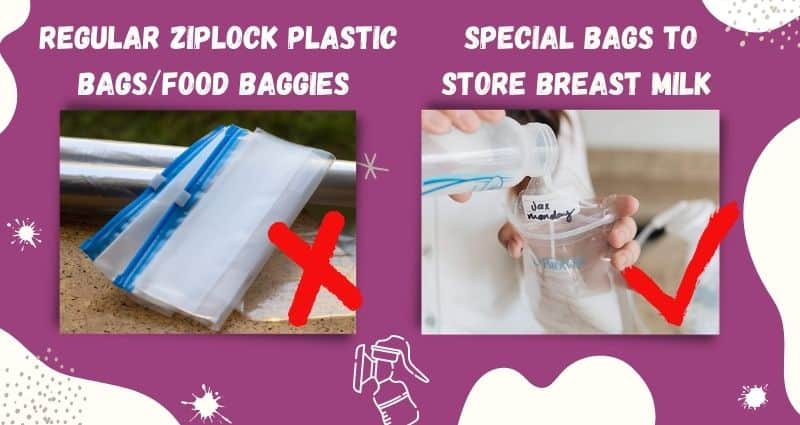
Here are some of the reasons why you should opt for breast milk storage bags instead of Ziploc bags or food baggies:
- Food baggies or Ziploc bags were not made specifically for breast milk. These bags can easily leak and spill. The breast milk storage bags on the other hand are designed for breast milk. The material is durable and will not spill or leak.
- With food baggies there is a high chance of contmaination. These bags are not sterilized and when you place them near the packet of chicken nuggets that has expired 3 years ago, you are just increasing the chances of germs and bacteria entering the breast milk.
- Breast milk storage bags are pre-sterilized, which makes them contaminant and germ free.
- Breast milk storage bags are BPA-free and are designed to freeze, thaw, and warm breast milk while preserving its nutrients. Food baggies are not designed for this purpose.
- You will have to transfer the milk from the bag to the bottle. It will be easier for you to pour the milk from a breast milk storage bag as compared to a food bag, as many breast milk storage bags have spounts for this very reason.
- Also remember that breast milk storage bags are different from bottle bags. Bottle bags are flimsier and are only used for feeding purposes, they are not recommended for storing and freezing.
Tips on how to use breast milk storage bags
For a new mom, using any new baby product is like learning a new skill. There may be a few trials and errors, but you will get there soon enough. Mastering the breast pump may take a while, but using breast milk storage bags is a lot easier.
The following tips will help you in understanding how to use breast milk storage bags:
- Always wash your hands before handling the breast pump or the breast milk storage bags. You wash your hands before cooking any meal, then you need to wash your hands before using the breast pump and the breast the milk storage bags as well. After all, breast milk is your baby’s meal.
- Also ensure your breast pump parts and bottle are clean and sterilized before using them. These products can build up gunk if not washed regularly.
- Once you are done pumping, you will have to transfer the milk collected in the bottle into breast milk storage bags.
- Remove the safety/tamper seal of the bag, open the zipper or cap, and then transfer the milk.
- Ensure you remove all the excess air from the bag before sealing it.
- Double check the seal to ensure there will be no accidental leaks.
- Don’t overfill the bags. The milk will expand once it is frozen. If you overfill the bags, they can burst open and all the milk will have to be thrown. So leave some space in the bag for the milk to expand.
- Another reason not to overfill the bags is that if your baby only drinks 4 ounces of milk and you filled up the bag to 8 ounces, then you will have only 2 hours to use up the remaining milk and then you will have to throw it away.
- It is always better to store breast milk in smaller batches. You can always take milk from another bag and use. Just remove the bag, defrost it, and the take the required amount of milk out. Place the milk bag back in fridge (not the freezer). You will have 24 hours to finish the renaming milk because the milk has not touched the child’s saliva; therefore, is not contaminated.
- You should not refreeze milk that has already been defrosted. You can keep it in the fridge, but only for 24 hours and then throw it away if it is not used.
- All breast milk storage bags are for one time use only. Once you have used them, they will no longer be sterile. So as soon as you transfer the milk from the breast milk storage bags, you will have to throw them away.
- Always store the milk in the back of the freezer and not in the door. The constant opening and closing can create temperature variations in the door. Keeping the breast milk at the back will ensure that there is minimal temperature fluctuation.
- Never mix different batches of milk. The breast milk storage bag should have milk from only one batch. Do not mix milk from two batches so that you can save some space. Both batches were expressed at different times, and therefore, will have different expiry dates. So don’t mix.
- Always label your milk. Some breast milk storage bags come with a label, while some don’t. Just write (use markers, as ball point pens won’t work) the date the milk was expressed (the time as well if you express milk multiple times a day), the amount of milk stored in the bag, and your child’s name.
- Writing the date will help you figure out which is the oldest milk and you can use that first. It will also inform you if the milk has expired and you need to throw it away now.
- Writing the amount will help you monitor your baby’s eating habits. Any decrease in their intake can be sign of concern. The intake should increase.
- Writing the child’s name on the label comes in handy if you are dropping off the milk at the day-care center. The workers there will be able to identify the milk given for your child easily if their name is written on the bag.
- Use only breast milk storage bags that are BPA-free and FDA approved.
- Follow CDC guidelines on how to store breast milk.
- If you have any leftover milk in the bottle that the baby did not drink, it should be consumed within 2 hours after your baby has finished feeding. Throw the milk away after 2 hours.
- Usually babies less than 2 weeks old will drink about 2–3 ounces of milk. So store only that much amount in the storage bags to reduce milk wastage.
- For older babies you can store about 3.5 ounces in each breast milk storage bag.
- Some babies even have chilled milk, but you should only give them chilled milk after they are a few months old.
- Milk from different batches should not be mixed while storing, but milk from different batches can be mixed while feeding if neither is spoiled.
There are also some tips and hacks to store breast milk efficiently. It would help you organize and utilize the milk stored better.
Bottles vs. breast milk storage bags—what is better??
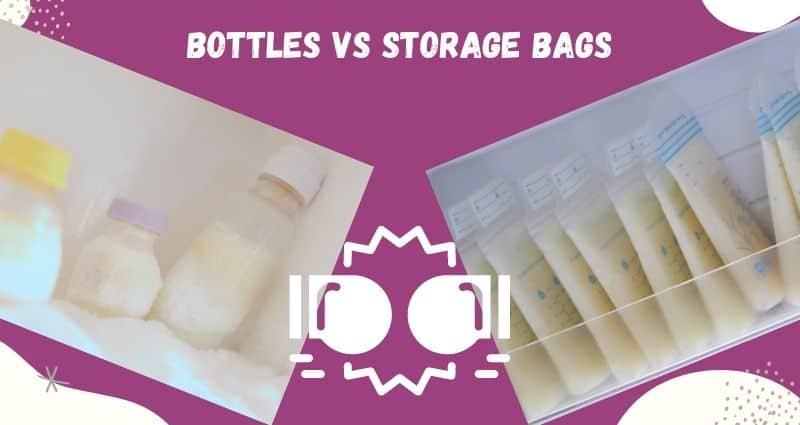
As parents, we have already invested in a ton of bottles (your sink will give you constant reminders of the amount of bottles in your home). So you may think, why should you invest in breast milk storage bags, the bottles are just as effective.
Honestly, bottles are just as effective. The following key features may help you in deciding which storage method is ideal for you:
| PROS | CONS |
| Bottles are more sturdy and durable; therefore, the possibility of leaks and spills is almost completely removed. | You can store 50 (or even more) breast milk storage bags in the freezer simultaneously, but if you try to store the same amount of milk in bottles, your freezer will be overflowing with just bottles. Bottles will take up a lot more space in your freezer as compared to breast milk storage bags. |
| Bottles can be washed and reused. | You will have to buy more bottles (yes!! A lot more bottles) because you will need ample of bottles for storing and also ample of bottles for feeding. |
| You can maintain the sterile environment of the breast milk by sterilizing the bottle before use. | Buying so many bottles will also become very expensive. |
| The possibility of cross-contamination is also negligible, as bottles cannot be torn or punctured like breast milk storage bags. | Milk that is stored in bottles may take longer to heat up as compared to milk stored in breast milk storage bags. |
At the end of the day, it is your choice. Our recommendation would be store the milk in bottles if you are planning on storing milk only for short term (only in the fridge) and use breast milk storage bags if you are planning on storing milk for the long term (mainly in the freezer).
Breast milk storage bags FAQs
Q. Can breast milk storage bags be reused?
No. Breast milk storage bags are for one-time use only. Once you have used them, they need to be thrown away. Rinsing/washing them and reusing them is a bad idea, as these bags will no longer be sterile. You don’t want to take a chance with your little one’s health just to save a few dollars.
Q. How to defrost breast milk?
You can defrost breast milk by placing it in the refrigerator, but this may take about 12 hours. Another way to thaw the milk is by keeping the breast milk storage bag under running warm water. But never use a microwave to defrost and heat the milk. Microwaving can create hot spots in the milk causing your baby’s sensitive skin to burn.
One very important thing to remember is that do not refreeze defrosted milk. So when you are defrosting, only remove one bag at a time. You can always remove more bags later if needed.
Q. How do you know the milk has gone bad?
Yes, even breast milk can be spoiled, and you don’t want to give your child spoiled milk. Labelling the breast milk storage bags with dates the milk was expressed can easily give you information about when the milk will expire. Always keep a track and throw away any milk that has expired.
Always smell the milk before giving it to your child. If it smells foul or sour, discard it immediately.
Frozen breast milk can develop a smell that is normal. You will have to figure out what is the normal smell and what is the bad smell. Don’t worry, after smelling the first couple of breast milk storage bags, you will be able to differentiate the normal smell from the foul smell easily.
Q. How many breast milk storage bags will I be needing?
Every women’s milk supply will be different. When you are breastfeeding directly, it is hard to tell how much milk your baby is consuming or how much milk you are producing. But once you start pumping, you will soon come to know how much milk you produce.
Our suggestion is to store at least a week’s supply of breast milk. Just keep replenishing the bags that have been used to ensure there is always a week’s supply at hand.
If you have just starting storing and are not sure how many bags you will need, it is better to start with 30 bags and then adjust the amount based on your pumping routine and your child’s consumption. If you are going back to work, you don’t need to fill the entire freezer with breast milk. Aim for about 30 ounces in the start, as that should be enough. You can always adjust the amount after a few weeks of observations.
Q. Can milk be warmed in breast milk storage bags?
When you directly breastfeed, the milk coming out is warmer. So babies get used to drinking warm milk. Just thaw the milk on the counter top or the refrigerator to thaw it.
Room temperature or body temperature milk is ideal for babies, but if you want to warm it further, then you can place the breast milk storage bags in a bowl of warm water.
You can also use bottle warmers to warm the milk. Many bottle warmers are compatible with breast milk storage bags. But always check the manufacturer’s guidelines before using it to warm breast milk storage bags.
Never use microwaves to warm the bags, as microwaves can create hot spots and scald the baby.
Final thoughts
Storing breast milk is always a good idea. If you are not around, other caregivers can feed the baby with the stored milk. This storage method especially becomes useful when you are going back to work or leaving your child at day-care. Your child will still have mom’s milk no matter whether you are around or not.
Our list of ‘12 Best Breast Milk Storage Bags of 2022’ has the best options available in the market. We bet you will find a breast milk storage bag that suits your needs in this list. You can also go for our top picks, they are the best of the best.
If you are one of the lucky moms who has a generous milk supply that suffices your little one and a lot more, then consider donating the surplus milk in a breast milk bank near you. Milk storage bags come handy in such cases. You can help out many parents and children by doing so.
Happy Storing & Feeding!!
